What is Inbound Marketing – A Complete Guide
Contributors:
Adarsh Gangwal
Published: September 22, 2023
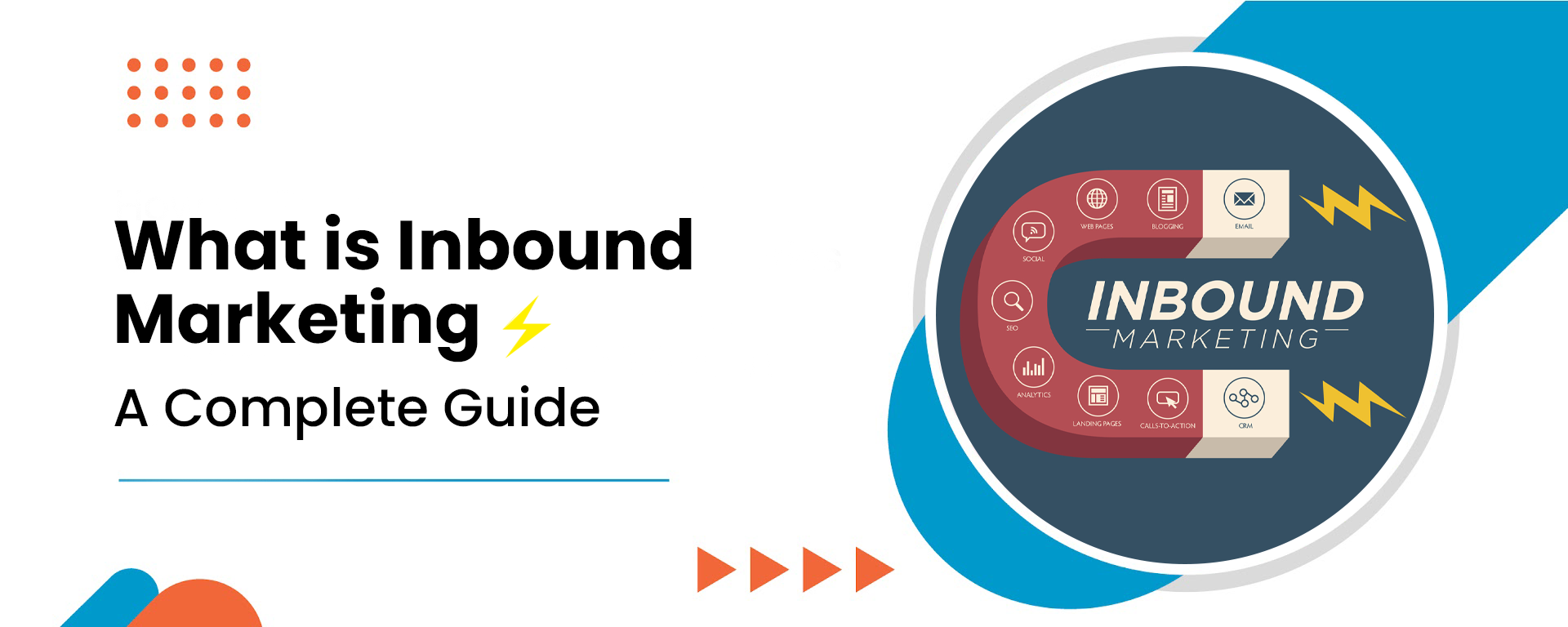
Introduction
A brief introduction to the concept of inbound marketing.
In the business landscape, grasping the essence of marketing methodologies is pivotal. One such approach gaining substantial traction is inbound marketing. This strategy differs from traditional outbound methods by emphasizing customer attraction instead of push.
Overview – How does inbound marketing differ from traditional outbound marketing methods.
Inbound marketing is centered on attracting and engaging customers organically. It diverges from traditional outbound strategies, forging a path that aligns with the modern consumer’s inclination for self-discovery and online information-seeking.
Determining between inbound and outbound marketing is essential. Instead of interrupting audiences with disfavored messages, inbound marketing creates practical, tailored content that meets the needs and interests of the target audience.
1. Inbound Marketing Philosophy
Inbound marketing is a customer-centric methodology that creates helpful content aligned with the target audience’s needs and interests, unlike traditional outbound tactics that impose messages on consumers. This shift reverberates seamlessly with the contemporary behaviors of online consumers actively seeking information.
- Description of the inbound marketing methodology.
At its core, it’s a transformative approach that hinges on drawing customers in organically. Unlike traditional outbound strategies that interrupt, inbound marketing delicately weaves a narrative through valuable content strategically positioned to attract and engage the audience.
- Discussion of its customer-centric focus.
Inbound marketing is a customer-focused approach that revolves around creating a symbiotic relationship rather than a transaction. It creates valuable content aligned with the target audience’s needs and interests unlike outbound tactics that impose messages on consumers.
- How inbound marketing aligns with modern consumer behaviors.
Exploring how inbound marketing aligns with modern consumer behaviors sheds light on its efficacy. In an era where individuals actively seek information online, inbound marketing becomes a beacon. It caters to the contemporary preference for self-directed discovery and meaningful engagement by aligning with how people consume content.
2. Core Components of Inbound Marketing
- A thorough guide to inbound marketing, covering social media, content creation, email strategy and SEO.
Content Marketing: Content creation is the foundation of inbound marketing. It attracts and engages potential customers by producing educational, entertaining, or problem-solving materials.
SEO (Search Engine Optimization): It is crucial to enhance online content for search engines to make it discoverable by people actively seeking relevant information. This optimization improves organic visibility and drives targeted traffic.
Social Media Marketing: Businesses can connect with their audience and build brand loyalty using social media platforms like Facebook, Twitter, and Instagram.
Email Marketing: Although traditional, personalized and relevant emails remain effective and are key to nurturing leads and sustaining customer relationships.
- How each component contributes to a comprehensive inbound strategy.
Each component of an inbound strategy is a vital thread woven into a comprehensive tapestry. From content and SEO to social media and email, they work harmoniously, ensuring a strategic alignment that not only attracts but engages, converts, and delights the audience, fostering enduring relationships.
3. The funnel of Inbound Marketing Funnel
- The inbound marketing funnel comprises four stages:
The inbound marketing funnel orchestrates four distinctive stages: Attract, Convert, Close, and Delight.
Attract potential customers by creating compelling content and optimizing for search engines.
Transforming website visitors into leads via engaging calls-to-action, landing pages, and forms that facilitate meaningful interactions.
Nurturing leads into customers involves deploying effective sales strategies, personalized communication, and addressing specific pain points.
Providing exceptional post-purchase experiences can turn customers into brand advocates who enthusiastically endorse the product.
- Conceiving strategies and tactics for every stage of the marketing funnel
Understanding the Audience: It is important to have a thorough understanding of target audience for a successful inbound marketing strategy. Creating buyer personas can help tailor content to their specific needs and preferences, especially in the “Attract” stage.
Compelling Content Creation: Create captivating and valuable content aligned with SEO best practices. This attracts organic traffic and positions the brand as an authoritative source, ensuring discoverability in the digital landscape.
Leveraging Interest: Tactics for the “Convert” Stage
Strategic Calls-to-Action (CTAs): Implement strategically placed and enticing CTAs within your content. These catalyze converting visitors into leads, guiding them toward the next engagement stage.
Engaging Landing Pages: Design and optimize landing pages that seamlessly lead visitors through a journey. Clear, concise, and visually appealing pages enhance user experience and facilitate conversion.
Nurturing Relationships: Strategies for the “Close” Stage
Effective Sales Strategies: In the “Close” stage, personalized and consultative sales strategies emerge. Understand potential customers’ pain points and tailor your approach accordingly, fostering a relationship built on trust.
Personalized Communication: Implement customized communication strategies, leveraging tools like customer relationship management (CRM) systems. This ensures tailored interactions that address individual needs and concerns.
Exceeding Expectations: Tactics for the “Delight” Stage
Exceptional Post-Purchase Experiences: Elevate the customer experience post-purchase by delivering beyond expectations. This involves streamlined onboarding, responsive customer support, and personalized interactions to create a lasting positive impression.
User Advocacy Encouragement: The key to a successful inbound marketing strategy is to apply customized tactics at every stage of the funnel. To build lasting relationships and turn customers into brand advocates, businesses should focus on understanding, engaging, and delighting their audience. Encouraging user advocacy is crucial, and can be achieved by actively promoting and facilitating it. Leveraging social proof, such as testimonials, can help transform satisfied customers into enthusiastic advocates who organically promote your brand.
4. Building a Successful Content Strategy
In the digital era, content is crucial for businesses to attract and engage potential customers. Understanding its significance is pivotal as it acts as a magnet that draws in and captivates your target audience.
- Volume of content in attracting and engaging potential customers.
Let’s start by understanding inbound marketing – a strategy that focuses on creating relevant content to attract prospects organically, unlike outbound marketing that sends messages to a wide audience.
Suggestions for developing content strategy that resonates with target audiences.
1. Know Your Audience: Crafting Tailored Content
Begin the journey by comprehending your audience’s needs, preferences, and pain points. Use this insight to tailor content that speaks directly to them, addressing the concerns and providing solutions.
2. SEO Integration: Elevate Visibility
Incorporate relevant keywords seamlessly within your content to enhance SEO. This boosts visibility on search engines while ensuring the content aligns with what the audience is actively searching for.
3. Consistency is Key: Establishing a Content Cadence
Develop a regular posting schedule to keep your audience engaged. Regular and reliable content delivery builds anticipation, fostering a deeper connection with your brand.
Types of content that work best for inbound marketing.
1. Informative Blog Posts: Educational Engagement
Craft informative blog posts to showcase your expertise, address FAQs and emerging topics, and establish your brand as an industry authority.
2. Effective Visuals: Captivating the Audience
Using visually appealing elements like infographics, videos and images can make the content more memorable and easy to understand.
3. Interactive Content: Promoting Engagement
Interactive content, such as various quizzes, and surveys, can engage your audience and also provide valuable insights into your content strategy.
5. Leveraging SEO in Inbound Marketing
- What is Inbound Marketing?
Inbound marketing is a transformative approach focusing on attracting, engaging, and delighting potential customers through valuable and relevant content. Inbound marketing revolves around building trust and credibility to establish lasting relationships with your audience.
- The Role of SEO in Attracting Quality Traffic
At the core of a top inbound strategy lies SEO (Search Engine Optimization), a pivotal element for enhancing online visibility. SEO is integral to attracting quality traffic to your site, ensuring that your content is discoverable by those actively seeking information about your products or services.
- Best Practices for SEO Optimization
More than crafting compelling content is required; it must be optimized for search engines. Employing keyword research, creating engaging meta descriptions, and building a robust internal linking structure are best practices for optimizing content and websites. This ensures the content ranks higher in search engine results, driving organic traffic.
6. Using Social Media to Amplify Inbound Efforts
- What is Social Media’s Role in Inbound Marketing?
In the inbound marketing landscape, social media serves as a dynamic amplifier for content distribution and audience engagement. It bridges the gap between the businesses and their audience, fostering two-way communication and building brand loyalty.
- Strategies for Choosing the Right Social Media Platforms
Selecting the topmost suitable social media platforms is crucial. Understanding target audience and the nature of your content is essential for devising effective strategies for choosing and using the correct social media platforms. This ensures that your message reaches the right audience at the right time.
7. The Impact of Email Marketing in Nurturing Leads
- What is an Inbound Marketing Strategy with Email?
Inbound marketing employs a holistic strategy to guide potential customers through the sales funnel. Email marketing is essential for engaging leads with personalized content delivered straight to their inbox.
- Best Practices for Effective Email Campaigns
Crafting compelling subject lines, segmenting your audience, and delivering valuable content are best practices for creating effective email campaigns. This establishes an uninterrupted communication line with potential clients and keeps them interested throughout the purchasing process.
8. Analyzing and Measuring Inbound Marketing Success
- Key Metrics and KPIs for Inbound Marketing
It is vital to track key metrics and KPIs to measure the effectiveness of your inbound marketing strategy. Metrics including website traffic, conversion rates, and lead-to-customer ratios are indicators of success. Understanding these metrics is crucial for refining and optimizing your strategy.
- Tools and Techniques for Analyzing Inbound Marketing Performance
Utilizing analytics tools like Google Analytics and marketing automation platforms provides valuable insights into user behavior and campaign performance. Employing these tools and techniques for analyzing inbound marketing performance allows marketers to make data-driven decisions and continuously improve their strategies.
Conclusion
In conclusion, a well-crafted inbound marketing strategy that integrates SEO, social media, and email marketing is instrumental in attracting, engaging, and nurturing leads. By understanding the nuances of these elements and employing best practices, businesses can create a powerful online presence and drive sustained success in the digital landscape.
FAQs
1. What is the fundamental concept of inbound marketing, and how does it differ from traditional outbound marketing?
Inbound marketing is a customer-centric strategy centered on attracting, engaging, and delighting potential customers. Diverging from traditional outbound approaches, which force messages onto audiences, inbound marketing focuses on providing value through pertinent and beneficial content.
Inbound vs. Outbound Marketing Dynamics
Understanding the nuances of inbound and outbound marketing is paramount. Inbound creates an attractive pull, enticing prospects with valuable content, while outbound involves pushing messages broadly, often through conventional channels like TV ads or cold calling.
2. How does inbound marketing focus on attracting and engaging potential customers through content and valuable experiences?
Core Emphasis on Attraction and Engagement
Inbound marketing prioritizes the art of attracting and engaging potential customers through content. Aligning content with audience needs and interests naturally draws in prospects actively seeking information related to a business’s products or services.
3. What role does content creation play in the success of an inbound marketing strategy?
Content Creation as the Cornerstone
Content creation stands as the cornerstone of inbound marketing triumph. Whether conveyed through blog posts, videos, or social media, crafting valuable and relevant content establishes businesses as authorities, not just attracting potential customers but fostering trust and credibility.
4. Can you explain the significance of buyer personas in shaping inbound marketing efforts?
Crafting Strategies Aligned with Buyer Personas
The creation of buyer personas, essentially fictional but research-backed representations of ideal customers, is pivotal in inbound marketing. Understanding the audience through buyer personas tailors content to address specific pain points and preferences, enhancing the personalization and effectiveness of the marketing strategy.
Personalization and Relevance at the Forefront
Shaping inbound marketing around buyer personas ensures that content isn’t generic but rather personalized and relevant. This approach resonates more profoundly with the target audience, significantly increasing the likelihood of attracting and converting leads.
5. How do inbound marketing strategies leverage digital channels, such as social media, blogs, and email, to reach and connect with audiences?
Expanding Strategies Across Digital Channels
Inbound marketing strategies strategically utilize digital channels such as social media, blogs, and email to connect with audiences. Social media platforms facilitate real-time engagement, blogs serve as content-rich hubs, and email enables direct communication. The synergy of these channels creates a comprehensive approach to reaching and connecting with a diverse audience.
Synergizing Social Media, Blogs, and Email
Social media platforms serve as dynamic tools for content distribution and interaction. Blogs act as repositories of valuable information, while email campaigns provide a straight line of communication. The amalgamation of these channels amplifies the reach and impact of an inbound marketing strategy, fostering a cohesive and integrated approach.
In essence, inbound marketing is about cultivating meaningful connections through valuable content and personalized experiences, a departure from the interruptive nature of traditional outbound marketing. By comprehending and implementing these principles, businesses can forge lasting relationships with their audience in the digital age.
About the Author
Growth Marketer
Focused on providing measurable results with minimal effort, Adarsh is a growth expert, constantly next-levelling his expertise. He is an experienced and trusted asset with extreme analytics skills.
Analysis for strategizing to hit an all-time high and keeping track of the growth. Targeting long-term growth jo returns rukne na de.
 Growth Strategy and Planning
Growth Strategy and Planning Inbound Growth
Inbound Growth Growth Hacking
Growth Hacking Search Engine Optimization
Search Engine Optimization Paid and Performance Marketing
Paid and Performance Marketing Social Media Marketing
Social Media Marketing AI-Driven Growth Strategy
AI-Driven Growth Strategy AI-Native Workflow Automation
AI-Native Workflow Automation Generative Engine Optimization
Generative Engine Optimization

 Marketing Decision Tree
Marketing Decision Tree Case Study
Case Study Tools
Tools Growth Tools
Growth Tools Custom GPT's
Custom GPT's





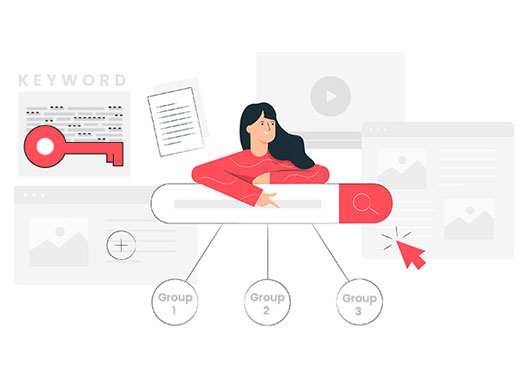
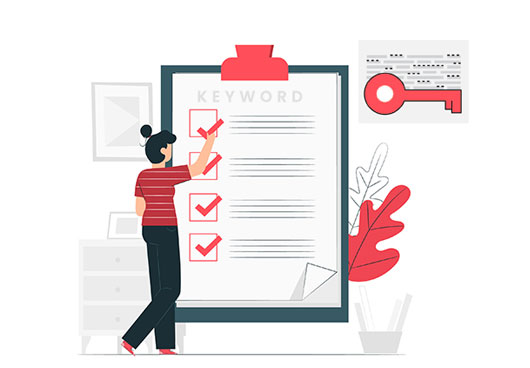

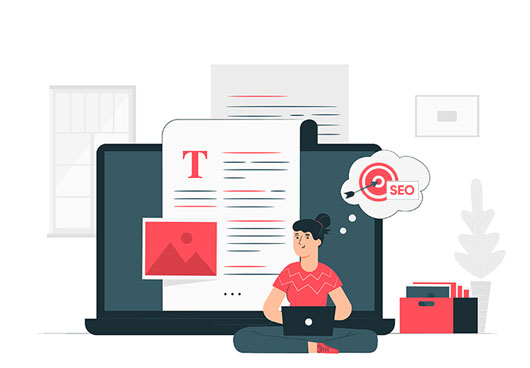
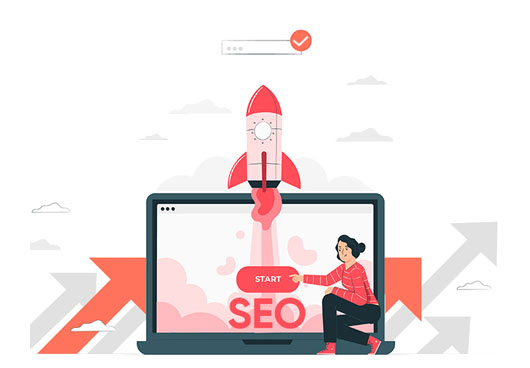
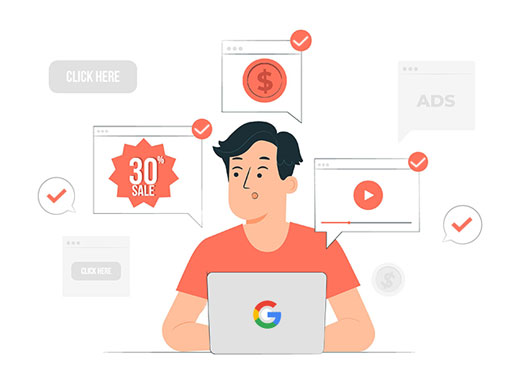
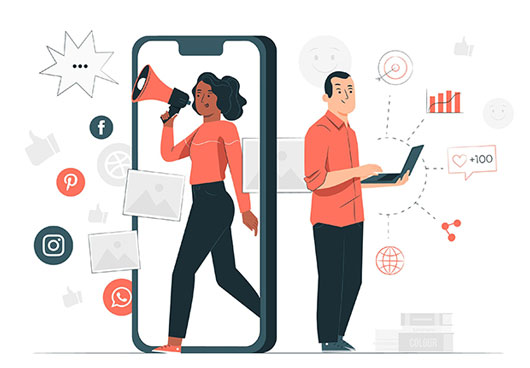


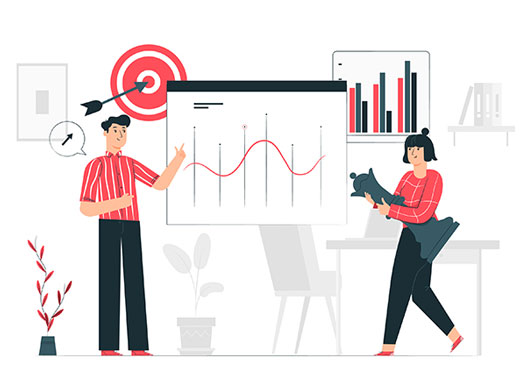
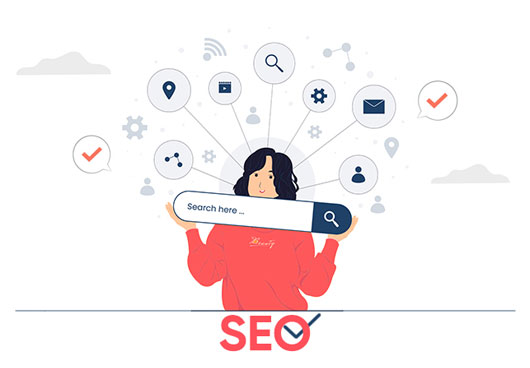


Leave a Reply